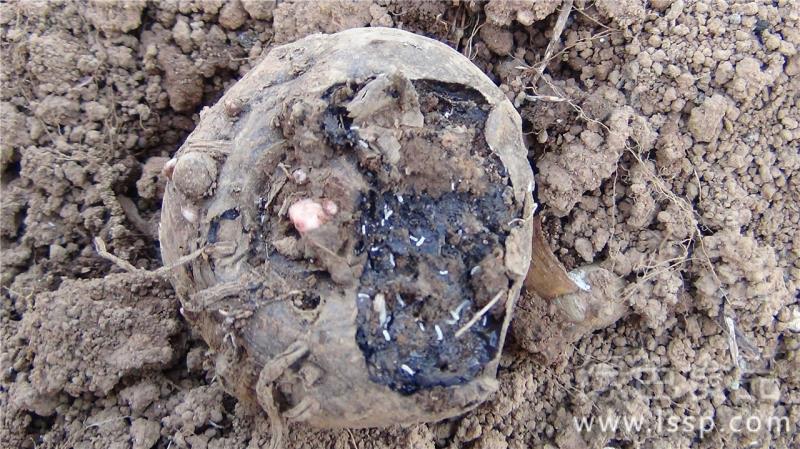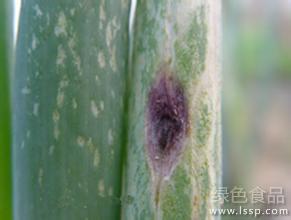How to prevent soft rot of konjac by soft rot
Konjac soft rot is a bacterial disease. Its pathogen can overwinter in soil or stored seed taro along with diseased body and tuber. The pathogen in field is mainly transmitted by rain, irrigation water or insects. Pathogens invade plants through various wounds such as insect wounds and mechanical wounds caused by farming. The high temperature and humidity environment is beneficial to the occurrence and prevalence of soft rot. Amorphophallus soft rot in seedling stage showed bent seedling tip, incomplete leaf development, lower petiole and seed rot; in growth stage, half of the plant yellowed or the whole plant yellowed, and in growth stage, the petiole and stem rotted, and the rotted place had foul smell.

soft rot disease
Early prevention and comprehensive control techniques should be adopted to control Konjac soft rot.
1. Strict seed selection and disinfection: seed taro should select high-quality seed taro with smooth epidermis, tender yellow skin color, normal shape, thick and short terminal bud, shallow and flat bud nest, no disease, insect and damage. Before sowing, use 10 million units of agricultural streptomycin +50% carbendazim 100g to 50kg of water, soak seeds for 1 hour, or soak seeds with 40% formalin 1: 200-250 times solution for 30 minutes, or soak seeds with 0.05% potassium permanganate solution for 10 minutes for seed taro disinfection.
2. Land rotation: select thick, fertile, moist, well-drained, slightly acidic to neutral soil. For fields with serious diseases, rotation for more than 3 years should be implemented. The previous crop should be wheat, barley, onion, garlic and other crops, avoiding continuous cropping with cruciferous, solanaceae, melon, tobacco and other crops.
3. Soil disinfection: deep soil turning in winter 30-40 cm deep to accelerate the decomposition of diseased bodies and inhibit the germination of sclerotia. Spring soil preparation should be deep and high to facilitate drainage and prevent ponding. When preparing the land with heavy disease, the mixed powder mixed with 50 kg quicklime, 50 kg plant ash and 1 kg sulfur powder can be sprinkled per mu, or 1-2 kg of dike pine powder can be used for soil disinfection per mu.
4. Seed taro disinfection: remove the taro seeds with glue flow, damage and abnormality when sowing, and spread them in the sun for 1-2 days; soak the seeds with 200- 500ppm agricultural streptomycin for 2-4 hours, then soak the seeds with 600 times solution of 20% lime water or 50% carbendazim wettable powder for 30 minutes, dry the epidermis and then seed, or use mixed powder (50 parts of lime, 50 parts of plant ash and 1 part of sulfur) to dress the seeds.
5. Fertilizer and water management: base fertilizer should be applied heavily for konjac production. When sowing, 3000- 4000 kg of decomposed farm manure, 30 kg of calcium superphosphate and 15 kg of potassium sulfate should be applied as base fertilizer. The application amount of base fertilizer should account for 70% of the total fertilizer amount, and more phosphorus and potassium fertilizers should be applied. Balanced fertilization. Do not apply too much nitrogen fertilizer to prevent excessive plant growth, phosphorus and potassium fertilizer should be added to enhance plant disease resistance. Do not apply undecomposed fertilizer when topdressing, do not approach plants when fertilizing, so as not to damage tubers and plants, water in time when drought, do not flood irrigation and series irrigation, so as to reduce the spread of germs.
6, shade and weeding: konjac "like shade afraid of the sun", high temperature is easy to cause burns, can be interplanted with corn or other economic trees or interplanting, enhance the disease resistance of plants. Konjac likes damp, afraid of high temperature and strong light, can be interplanted with high-stalk crops such as corn, sorghum, etc. to play a shading role, but also can choose to plant in the sparse forest field. When konjac seedlings are fully grown, straw and wheat straw are woven into a straw curtain to shade the growth of konjac. Konjac root shallow, distributed in about 10 cm of topsoil, intertillage grass can not be used hoe, should be pulled out by hand, in case of damage to roots and seedlings. Or use herbicides to remove weeds.
7. Chemical control: Before or at the early stage of the disease, agricultural streptomycin 200-500ppm, 50% ammonium bromide, ammonium aqueous solution 600-800 times solution can be used. 77% can be killed to obtain wettable powder 600 times solution for control, control soft rot once every 7-10 days, spray should pay attention to the base of konjac plants and the ground surface, find sick plants in the growth period, dig them out in time, take out the field for burning, sprinkle hydrated lime around the sick plants, and spray adjacent plants with the above chemicals to prevent and control the spread of diseases.
Related
- Fuxing push coffee new agricultural production and marketing class: lack of small-scale processing plants
- Jujube rice field leisure farm deep ploughing Yilan for five years to create a space for organic food and play
- Nongyu Farm-A trial of organic papaya for brave women with advanced technology
- Four points for attention in the prevention and control of diseases and insect pests of edible fungi
- How to add nutrient solution to Edible Fungi
- Is there any good way to control edible fungus mites?
- Open Inoculation Technology of Edible Fungi
- Is there any clever way to use fertilizer for edible fungus in winter?
- What agents are used to kill the pathogens of edible fungi in the mushroom shed?
- Rapid drying of Edible Fungi



